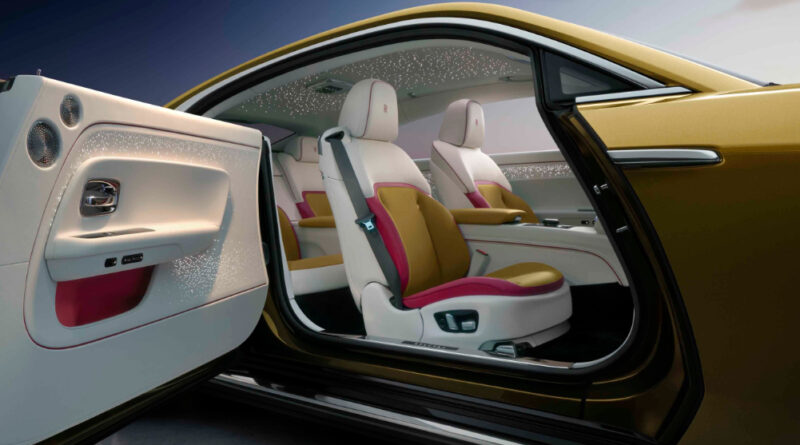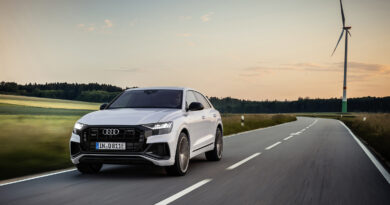The $1 million Rolls-Royce Spectre reviewed: Is this the best electric vehicle ever made?
It is strangely and disturbingly common for people to believe that Elon Musk actually invented the electric car when he created the cult, sorry, monolithic and borderline monopolistic brand that is Tesla, but the fact is that other people had thought of it before, decades before the man/myth Twit was born.
Indeed, no lesser a legend than Charles Rolls, one of the founders of Rolls-Royce, was excited about EVs a full 123 years before his company finally got around to building one – the new Spectre, which we’ve just flown to California to drive – announcing in the year 1900 that: “The electric car is perfectly noiseless and clean. There is no smell or vibration. They should become very useful when fixed charging stations can be arranged.”
And he’s right, once we get around to these futuristic-sounding “fixed charging stations” he was predicting, they will be very useful indeed. Fortunately, Rolls-Royce customers don’t have to worry about range anxiety to long distance, because they have fleets of staff, super yachts, helicopter pilots, chauffeurs and private jets to get them where they want to go.
But if they’re in the mood for a bit of green-tinged luxury, swanning around in the world’s first fully electric super coupe, they’ll be happy to find a Rolls Spectre, or two, parked in their mega garages, which will no doubt be fitted with their own bespoke DC fast chargers.
READ MORE: The electric year ahead: Every EV coming to Australia in 2023
READ MORE: The five best family EVs under $100K: From Tesla and Hyundai to Kia and Mercedes-Benz
READ MORE: Can the Model Y outsell the HiLux and Ranger?
Rolls-Royce Spectre: Value
Next question, please. Oh, all right, it’s $770,000 plus significant taxes and the tonne of money your average owner will no doubt spend on personalisation, so let’s call it $1 million as a reasonable starting point, with room to move up from there.
You do get very nice paint for that, though, and a free umbrella in each door.
All right, so the word “value” has no place anywhere near a $1m car, let’s just move on, shall we?
Inside
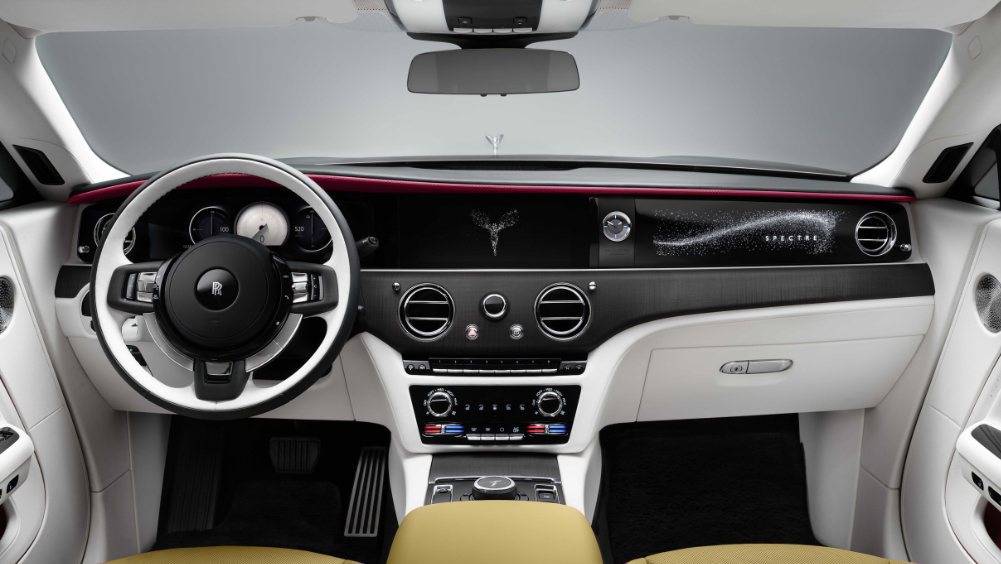
If you had to choose a car to be locked in for a year, or to get married in, the Spectre would be a pretty good option. It smells like money, like a rich person’s hair, like a stately home, like expensive wine. And it fees like luxury and quality and have watches and silk scarves and pocket squares, all rolled into one.
The Spectre just feels like a special place to be, in short, and the designers flatly refused to make it feel modern or EV-like inside. Indeed, it looks and feels very much like the non-EV Rolls-Royce Ghost inside, with lashings of leather and timber and only normal sized screens instead of giant ones.
The traditional organ stop aircon vents are still present and accounted for, as are big, plush massaging seats and the truly spectacular Starlight Headliner, which you can now option for the inside of your massive coach doors as well, at extra expense. This thing uses miles of optic fibre to create the night sky above and around you and it really does feel magical.
It’s also stupidly, freakishly quiet in there, but then all Rolls-Royces are like that – Silence is one of its three brand pillars, and nothing says silent like an electric powertrain (to be fair, you could barely hear the engines in the old ones either).
Performance and efficiency
As you would imagine, the performance of the Spectre is prodigious, with the ability to move its almost three-tonne mass through space at a pace that feels lightly absurd – hitting 100km/h in 4.5 seconds.
The chief engineer told me that it was even quicker, hitting 100 in 3.9 seconds, but that those early, pre-production versions were just too much: “after you did it two or three times, it made you feel physically ill”.
Even with the amount of speed they settled on, it’s quite a unique feeling to move something so big – it’s also 5.5m long and as wide as a barn – so fast.
Total power is 430kW and 900Nm and it’s delivered by two separately excited synchronous motors, one on each axle for all-wheel drive. The front motor makes 190kW and 365Nm while the rear has even more, with 360kW and 710Nm.
The battery is made up 804 cells and weighs an incredible 700kg, with a net capacity of 102kWh. If we ever build electric space ships, they’ll be a lot like this.
Charging
The Rolls-Royce Spectre is rated for a range of 520km on the WLTP scale, but Rolls claims it can do a lot better, but then they would. Efficiency is a claimed 21.5kWh per
The Spectre can be charged at up to 200kW on a DC fast charger, taking 35 minutes to go from 10 to 80 per cent charge. On an 11kWh home system it will take 10 hours and 45 minutes to go from zero to 90 per cent charge and on a 7kWh system, well, what kind of Rolls owner has one of those?
Rolls-Royce Spectre: Ride and handling
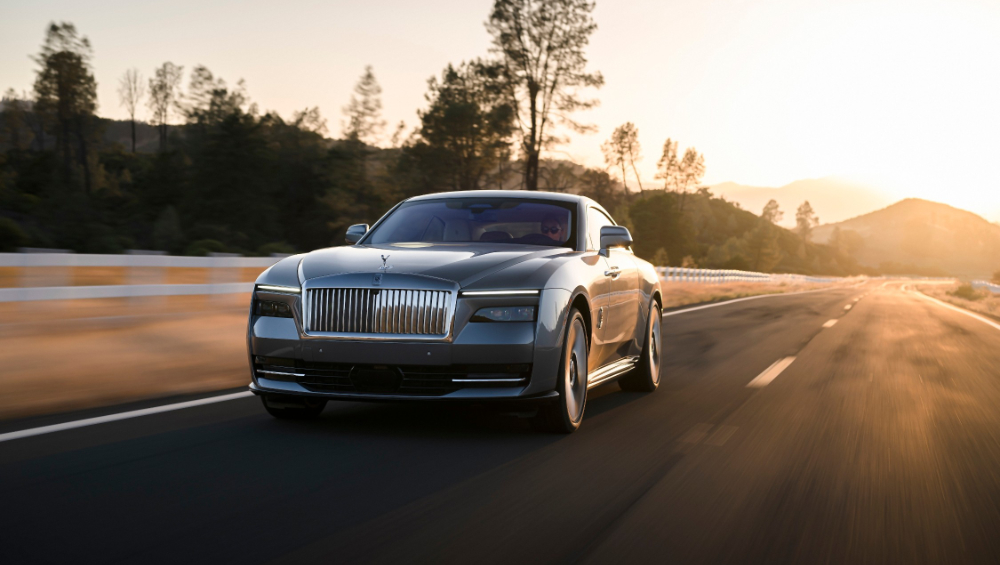
When it comes to unique descriptors, Rolls-Royce nails the brief with its brand pillar of “waftability”. It just so perfectly describes what it’s like to be in a Rolls, the feeling that you aren’t so much riding over the ground as wafting over it, like expensive cigar smoke over the fusty surrounds of a private club.
The Spectre, with the spectacular solidity of 700kg of battery beneath you, feels like it’s crushing the planet Earth beneath it as it goes, but there’s no sense of that contact with the ground for you as a passenger. You’re just floating, wafting, carefree and usually smiling smugly to yourself.
The driver can feel the road slightly, through the steering wheel and perhaps the seat of the pants, but again, it’s a distant concern.
The low centre of gravity and a hugely well sorted suspension system means the big Spectre can also hurl its way around corners at pace, should you ever want it to, and it even does this with an absurd amount of ease. Two fingers is all you need to drive a Rolls-Royce, it was ever thus, and it remains the same with Spectre.
Honestly, just to be in this car is a joy, to drive it is to acknowledge that having great potency doesn’t mean you need to use it. Frankly, you’re never in a great hurry to get to your destination in a Roller like this, you just want to keep driving (as long it’s not more than 520km).
Talking point
The Starlight Headliner has long been my favourite feature of a Rolls-Royce. This feature uses umpteen metres of optic fibre sewn into the roof of each Rolls-Royce by a team of seamstresses, to create a sky full of stars, complete with lovely shooting ones every now and then. And not just random stars; you can choose to have the sky laid out the exact way it was on the day you were born, or the night you made your first billion.
The Spectre takes this feature up another notch by extending the Starlight Headliner down into the doors (it’s optional, of course, and costs more, of course). And who doesn’t want stars in their thighs?
Safety
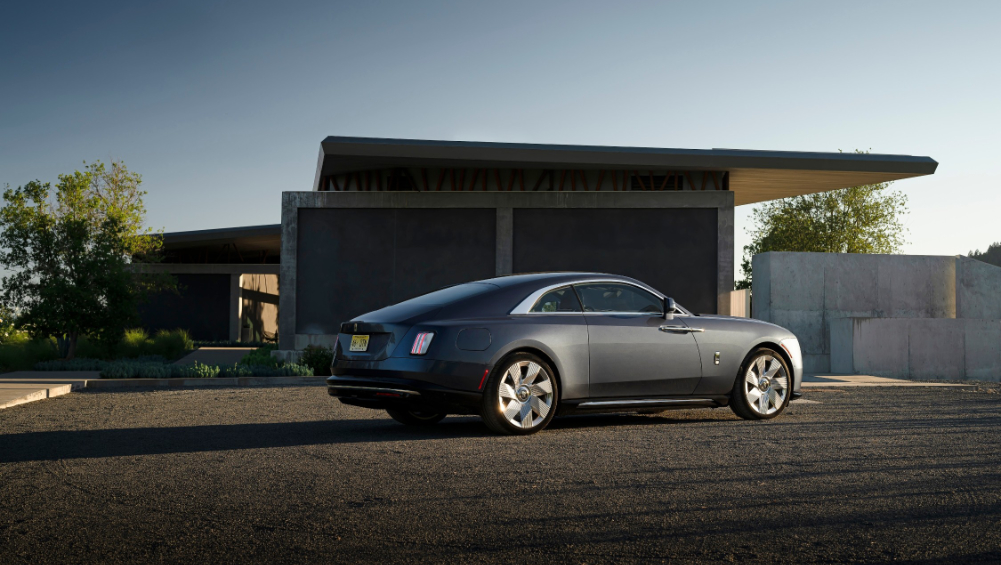
Yes, of course it’s safe, it feels like a tank, only much bigger and more solid. And apparently it only has four airbags because, according to Rolls-Royce, “that’s all it needs”.
Rolls-Royce Spectre: Verdict
It seems a strange thing to comprehend, unless you’ve driven one yourself, but honestly, no other car brand was more set up for a seamless shift to electrification than Rolls-Royce, so it should be no surprise that the Spectre nails the brief so spectacularly.
A Rolls-Royce has always been a silent experience and no one will miss the engine noise that was never there anyway. Nor have they ever bothered with gears or Sport modes; in a Rolls you just put in Drive and go, so nothing changes there.
And as for that “go”, the V12s of old were all about effortless and massive torque delivery. Just like an EV.
It’s no wonder the company has been swamped with orders for the Spectre, with 40 per cent of them coming from customers who are new to the brand. Clearly this was the car they’ve been building towards for 123 years, and sure enough the whole line up will be EVs by 2030.
Spiffing.

